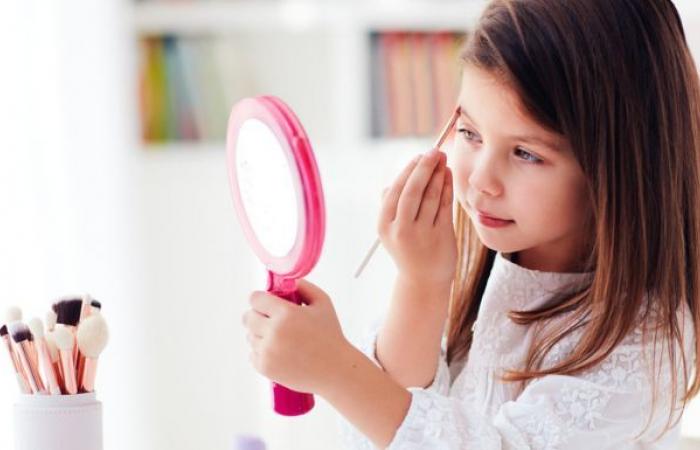On social networks, little girls and pre-teens act as beauty influencers by making “skincare” videos. The phenomenon, which arrived from the United States, encourages young people to use exfoliating cream, beauty mask, revitalizing and anti-aging serum or even makeup of all brands. What are the health risks associated with this misuse of adult cosmetic products?
Children’s skin
In children over 3 years old, the skin is more fragile, because they have an ineffective detoxification system. They are more sensitive to oxidative stress, cellular attacks caused by molecules derived from oxygen.
Also, their hydrolipidic film assimilated to the skin barrier is more vulnerable because it is thinner. In fact, their sebaceous glands (sebum-secreting glands) are not yet active. They will only be stimulated at puberty by different hormones.
In children, the skin will tend to become dehydrated and the risks of dry skin and pathologies such as atopic dermatitis are high.
To know! Atopic dermatitis or atopic eczema is a chronic itchy (itchy) skin disease that develops in outbreaks. It mainly affects infants and children, but can persist into adolescence and adulthood.
During the preadolescencethe pores of the skin dilate and the skin becomes more oily.
Irritations, allergies and endocrine disruptors
Applying an adult product to children’s skin is risky. In fact, their skin is thinner and more fragile.
THE irritations caused on the skin of young children may occur in the event of application of:
- Anti-aging cream containing acids or derivatives of vitamine A (retinol);
- Crème anti-imperfections or anti-acne containing salicylic acid ;
- Crème exfoliant with glycolic acid ;
- Serum with vitamin C.
In the “beauty routine” videos of these little girls or teenagers, we see that they apply several products. The combination of all these molecules contained in different cosmetics increases the risk of appearance intense irritations and allergies.
Indeed, certain active ingredients contained in creams, milks, balms and serums are allergens and cause skin but also ocular and respiratory reactions.
To know! The European Commission established a list in July 2023 of 80 allergens with mandatory labeling if their presence is 0.001% for non-rinsed products and 0.01% for rinsed products
Finally, by exposing their skin to multiple cosmetic products for adults, young girls add endocrine disruptors in their body. In other words, chemical substances (of natural or artificial origin) which disrupt the functioning of the endocrine glands (the organs which produce hormones).
Ces endocrine disruptors contained in cosmetics are often molecules playing a role of preservatives oremollients.
To know! An emollient is a product used to soften and soften the skin: it hydrates it to protect it from drying out.
Cosmetics for children
As advised by the American dermatologist, Dr Del Campo, who spoke to AFP: “Parents must supervise their children’s choices of care products and prioritize products specially made for young and sensitive skin. Using gentle, fragrance-free, hypoallergenic products can help maintain a healthy skin barrier without exposing it to unnecessary irritants or allergens.”.
THE only cosmetics suitable for children’s skin are :
- Mild soap;
- Moisturizing products (fragrance-free) and sun protection specially designed for children;
- Creams or lotions suitable for young or acne-prone skin;
- Lip balms.
Dermatologists point out that it is important to select a cosmetic marked “child”. Indeed, in this context, the same tolerance tests nor the same regulations apply.
Sources
– Sephora Kids: the new phenomenon of social networks and its dangers. www.pharma-gdd.com. Accessed October 16, 2024.
– “Sephora kids”: watch out for this dangerous trend for the health of children’s skin. factuel.afp.com. Accessed October 16, 2024.
Written by Julie P.






